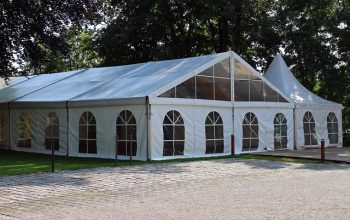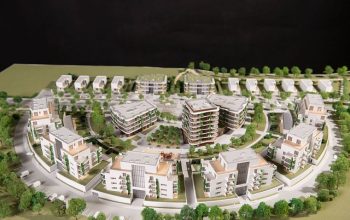The section on "Event Planning for Local Businesses" emphasizes the importance of selecting a community-based venue that supports the local economy and offers a familiar environment for networking events. These venues provide unique advantages like event-conducive layouts, convenient parking, and access to local amenities tailored to networking needs, allowing for personalized touches that reflect the local business ethos and foster a sense of belonging among participants. The content also highlights the role of strategic attendee selection, leveraging modern registration platforms and CRM tools for precise invitation targeting based on industry and role. Utilizing digital platforms, such as event apps and possibly VR/AR technologies, enhances interaction and experience by offering personalized profiles, scheduling, analytics, and immersive experiences that engage attendees in innovative ways. Post-event evaluation using KPIs, attendee feedback, and social media engagement metrics is crucial for understanding the event's success and for developing meaningful relationships with new contacts, ultimately leading to potential collaborations and sustained growth within the local business community. The key takeaway is that integrating technology into event planning for local businesses can significantly elevate networking experiences and position local entities as forward-thinking.
Networking events are pivotal for local businesses seeking growth and opportunity. This article delves into the art of planning such gatherings with precision, ensuring they are not merely social occasions but catalysts for meaningful connections. We explore how to select the perfect local venue, craft an engaging agenda, curate targeted invitations, and leverage technology to optimize interaction. Furthermore, we provide strategies for post-event analysis to measure success and cultivate long-term business relationships. By integrating these practices into event planning for local businesses, organizers can create a fertile ground for networking that transcends the ordinary, leading to tangible benefits and sustained professional growth.
- Leveraging Local Venues for Effective Networking Events
- Crafting a Compelling Event Agenda That Fosters Connection
- Targeted Invitations: Maximizing Attendee Relevance and Engagement
- Utilizing Technology to Enhance Interaction and Experience at Networking Events
- Post-Event Strategies for Measuring Success and Building Relationships
Leveraging Local Venues for Effective Networking Events

When event planning for local businesses, selecting an appropriate venue is a pivotal aspect of facilitating effective networking events. Opting for venues within the community not only supports local commerce but also creates a familiar and comfortable atmosphere for attendees. Local venues often have built-in audiences that can enhance attendance numbers and diversity, as they are accessible to individuals who may frequently visit or work nearby. These spaces can offer unique features such as event-friendly layouts, ample parking, and local amenities that cater to the needs of networking participants. Furthermore, leveraging these venues allows for a personalized touch, reflecting the local business community’s spirit and fostering a sense of belonging among attendees. This intimacy can lead to more meaningful connections and productive interactions, which are the cornerstone of successful networking events.
In addition to the ambiance, local venues can provide tailored services that align with the event’s objectives. Catering from nearby establishments can showcase local cuisine, reinforcing the community aspect. Moreover, these spaces might have versatile setups that can be customized to suit different networking formats, from structured meetings to more casual mix-and-mingle sessions. The adaptability of local venues ensures that event planners can design an experience that aligns with the specific goals of networking for local businesses, enhancing the overall efficiency and effectiveness of the event.
Crafting a Compelling Event Agenda That Fosters Connection

Crafting a compelling event agenda that fosters connection is pivotal for successful networking events, particularly when event planning for local businesses. The agenda should be meticulously structured to maximize interaction among participants, providing ample opportunities for attendees to engage with one another and with speakers or facilitators. A well-designed schedule promotes a smooth flow of activities, ensuring that each session transitions seamlessly into the next. For instance, starting with icebreaker activities can ease initial discomfort and encourage open communication from the outset. Subsequent segments might include workshops, panel discussions, and Q&A sessions that are thematically relevant to local business interests. These interactive elements should be interspersed with networking breaks, allowing participants to apply insights gained in real-time and discuss them within a dynamic peer environment. The agenda should also feature a variety of formats, such as roundtable discussions and speed networking, to cater to different communication styles and preferences. By focusing on active participation and meaningful interactions, event planners can create an engaging and productive atmosphere that not only facilitates connections but also fosters long-term relationships among local businesses and their representatives.
Incorporating local business themes into the event planning process ensures that the agenda remains focused and relevant to the attendees’ needs and interests. This targeted approach can lead to more effective networking by aligning the content with the specific challenges and opportunities present within the local business community. For example, a session on leveraging local resources for growth could be followed by a networking segment dedicated to connecting businesses with potential collaborators or mentors from those resources. The agenda should also leave room for spontaneity, as unexpected connections can often yield the most beneficial outcomes. By balancing structured activities with flexible spaces for organic interactions, event planners can create a vibrant and interactive environment that is conducive to forming lasting business relationships.
Targeted Invitations: Maximizing Attendee Relevance and Engagement

Crafting a successful networking event hinges significantly on the strategic selection of attendees. By leveraging event planning for local businesses, organizers can curate targeted invitations that maximize attendee relevance and foster meaningful engagement. A well-planned guest list ensures that participants are not only local business representatives but also align with the event’s objectives and the interests of other invited parties. This selectivity fosters a more intimate atmosphere where attendees are likely to engage in high-quality, peer-to-peer interactions, leading to actionable connections and potential collaborations. The use of advanced registration platforms and CRM tools can streamline the invitation process, allowing for precise targeting based on industry, role within the company, and past event participation. This targeted approach minimizes the chance of inviting individuals who are not a fit, thereby saving time and resources while enhancing the overall experience for those in attendance. By focusing on local businesses and tailoring invitations to those most likely to benefit from the networking opportunities provided, event planners can significantly elevate the value of the event and its outcomes.
Utilizing Technology to Enhance Interaction and Experience at Networking Events

Incorporating technology into event planning for local businesses can significantly enhance interaction and experience at networking events. Modern digital platforms offer a plethora of tools that facilitate seamless communication, foster connections, and provide valuable insights into attendee preferences and behaviors. For instance, the use of dedicated event apps allows participants to create profiles, schedule meetings, and engage in discussions with peers before, during, and after the event, thereby expanding the potential for meaningful interactions beyond the physical confines of the event space. Additionally, these apps often feature real-time analytics that enable organizers to tailor networking opportunities to attendee interests, ensuring a more personalized and effective experience.
Furthermore, leveraging virtual reality (VR) or augmented reality (AR) can create immersive experiences that captivate attendees and leave a lasting impression. Such technologies can simulate environments that complement the event’s theme or objectives, providing an innovative way for local businesses to showcase their products or services in an interactive format. The integration of these immersive technologies not only sets the host apart from traditional networking events but also provides attendees with an engaging and memorable encounter that can lead to stronger business relationships and opportunities for collaboration. By thoughtfully integrating technology into event planning, local businesses can optimize their presence at networking events, fostering connections in a dynamic and forward-thinking manner.
Post-Event Strategies for Measuring Success and Building Relationships

Following a networking event designed specifically for local businesses, assessing its success and leveraging the connections made are pivotal steps in the event planning process. To measure the event’s impact, it’s crucial to establish clear metrics beforehand. These could include the number of attendees, the quality of leads generated, and subsequent business transactions. Collect feedback from participants through surveys or follow-up conversations to gauge their satisfaction and gather insights for future events. Additionally, track engagement on social media platforms where the event was promoted or discussed, noting any spikes in activity or mentions that can indicate successful outreach.
In the weeks following the event, local businesses should focus on nurturing the relationships formed. This can be achieved by reaching out to new contacts with personalized messages expressing appreciation for their time and conversation. Offering value through informative content, invitations to exclusive offers, or collaboration opportunities can help strengthen these nascent connections. Moreover, setting up one-on-one meetings or follow-up calls to discuss potential partnerships or business opportunities ensures that the event’s networking efforts translate into long-term relationships and mutually beneficial outcomes for all involved parties. By meticulously planning these post-event strategies and prioritizing relationship building, local businesses can maximize their return on investment in networking events.
In concluding, the successful execution of networking events hinges on meticulous event planning tailored for local businesses. By strategically selecting local venues that complement the event’s theme and objectives, crafting an engaging agenda that encourages meaningful interactions, extending targeted invitations to relevant stakeholders, and integrating cutting-edge technology to facilitate seamless communication, these gatherings become more than mere social functions—they are catalysts for burgeoning partnerships and opportunities. Furthermore, post-event activities that assess the outcomes and nurture newly forged connections are crucial for sustained growth and professional development within the community. Implementing these strategies underpins the foundation for event planning for local businesses to thrive in the network of commerce.



